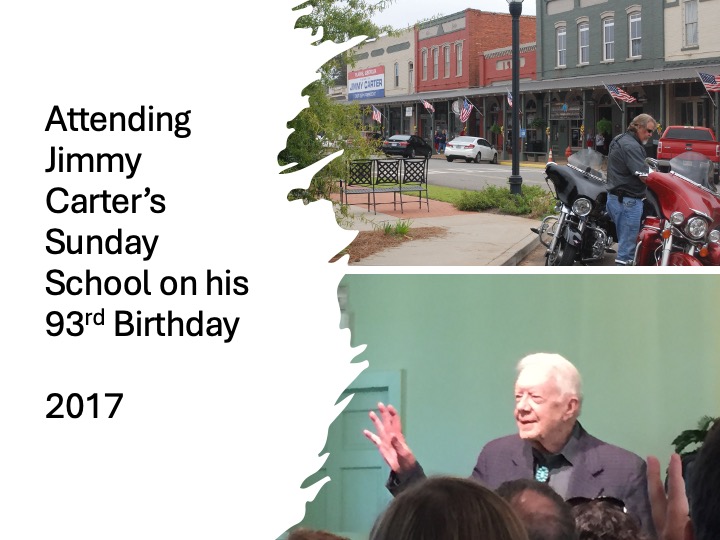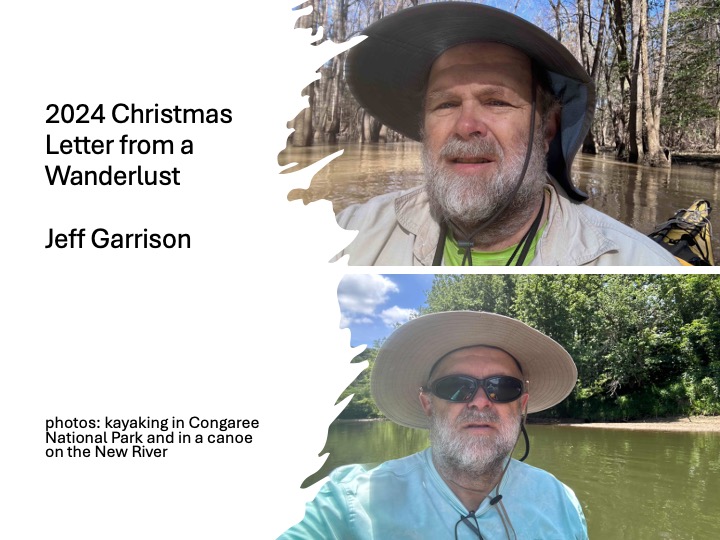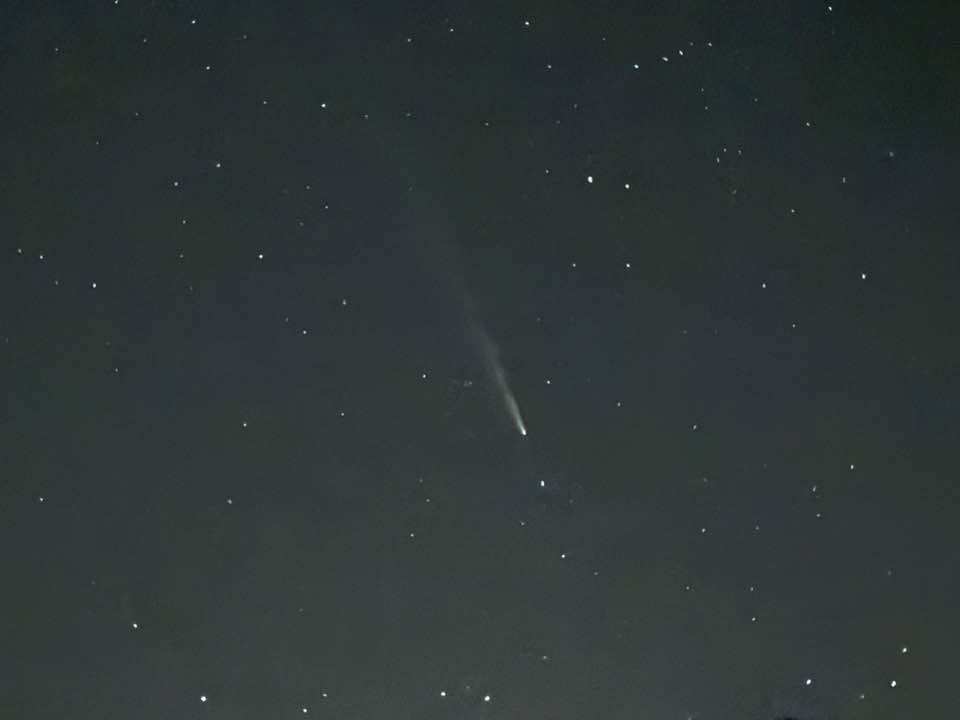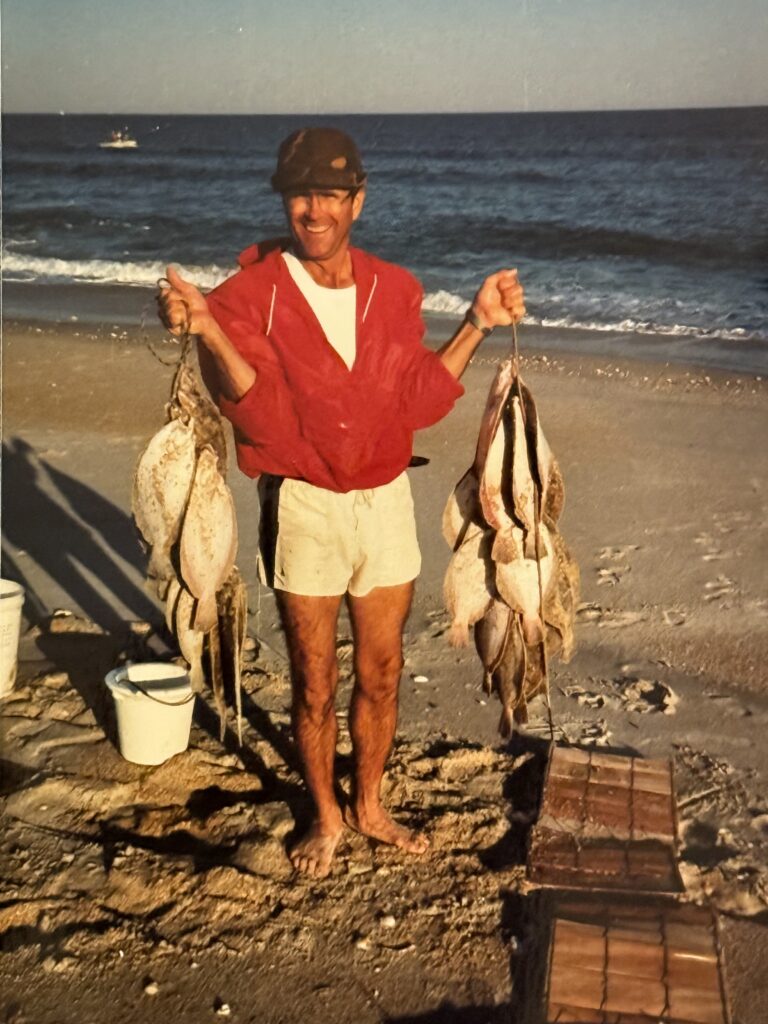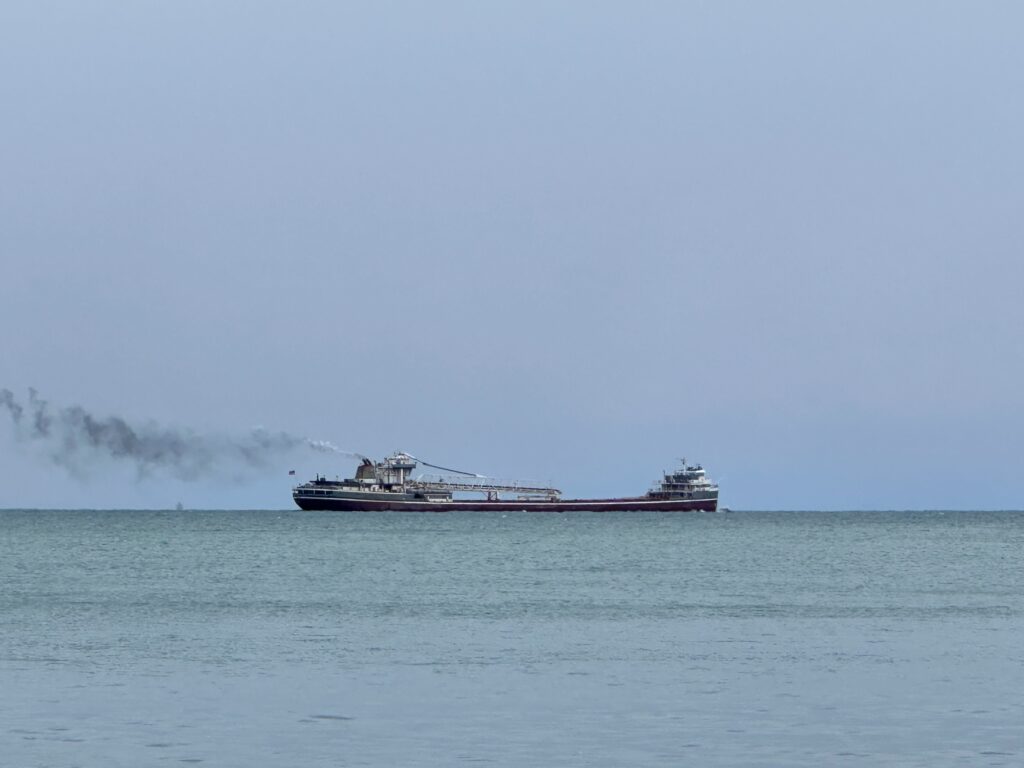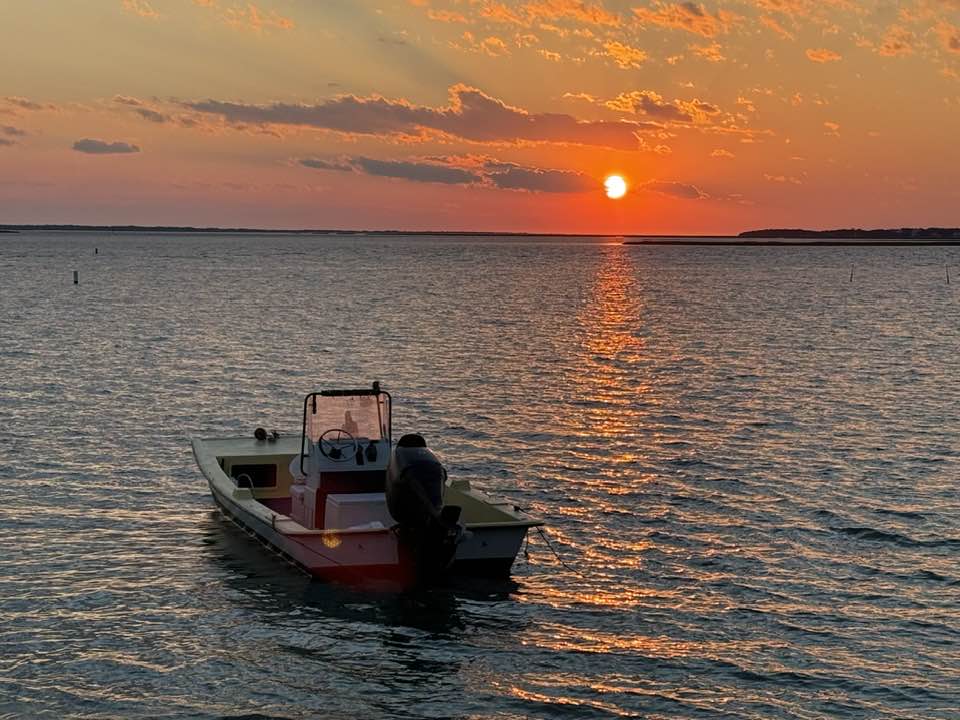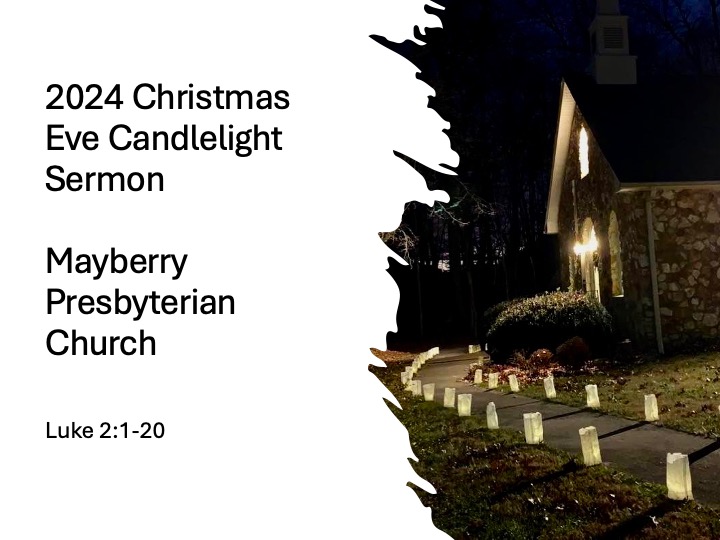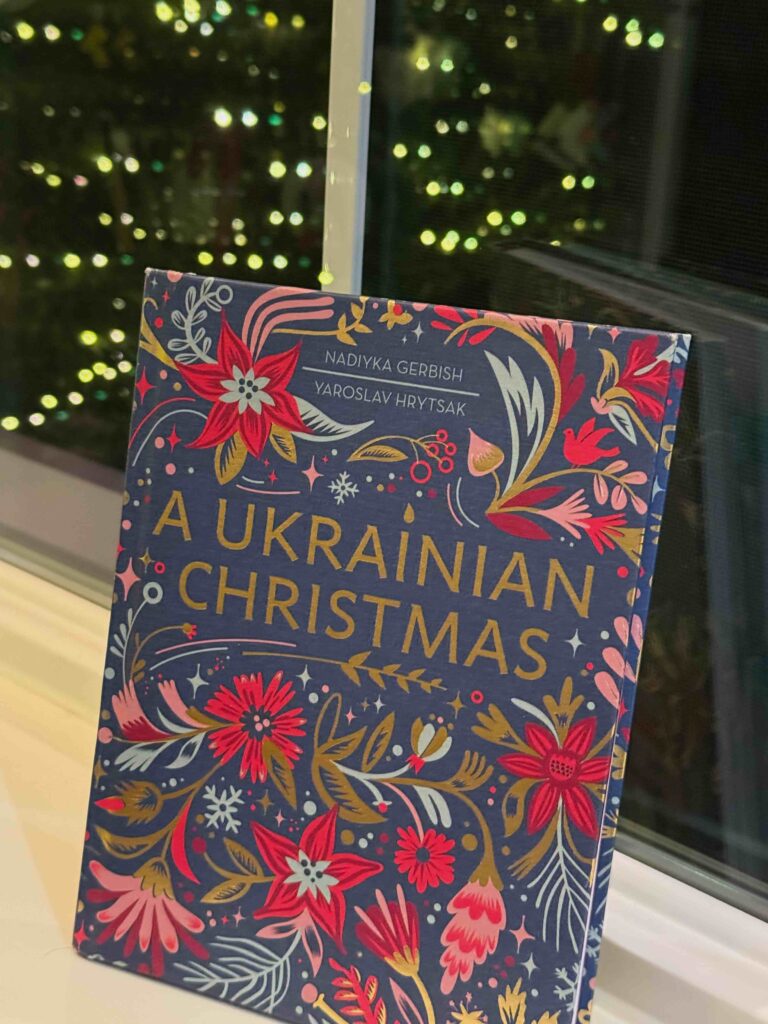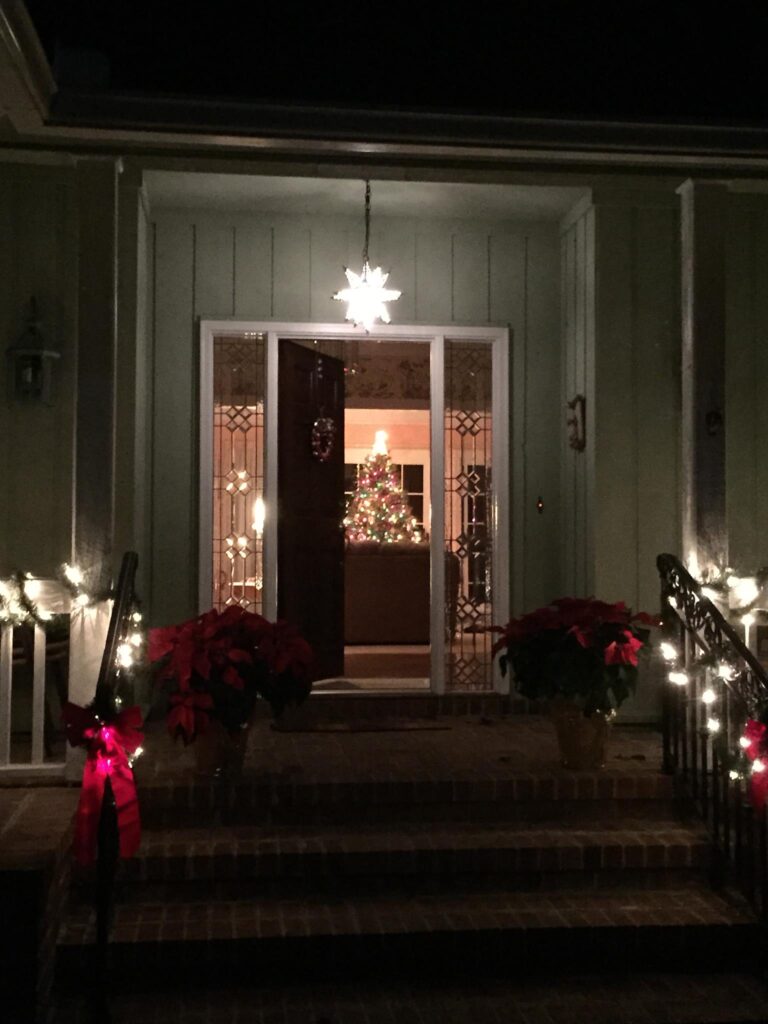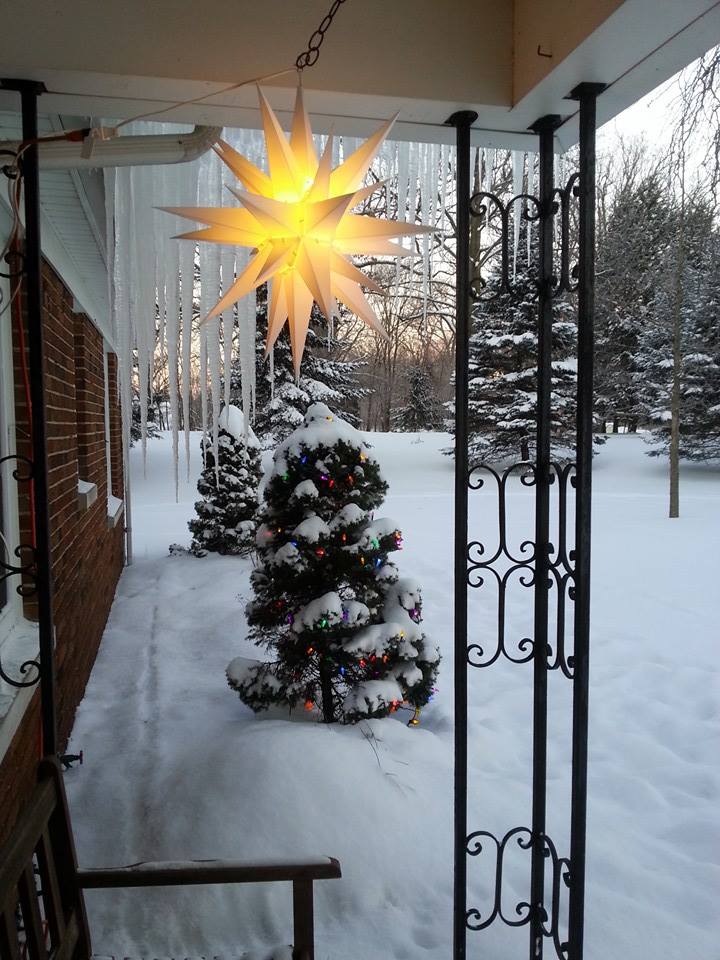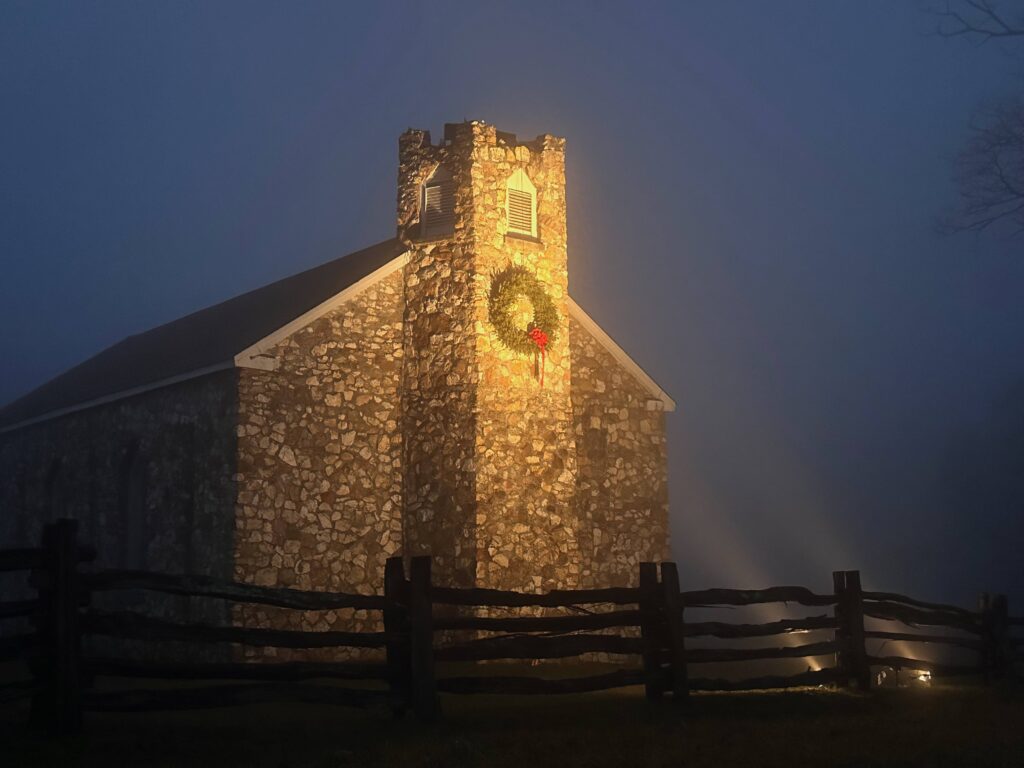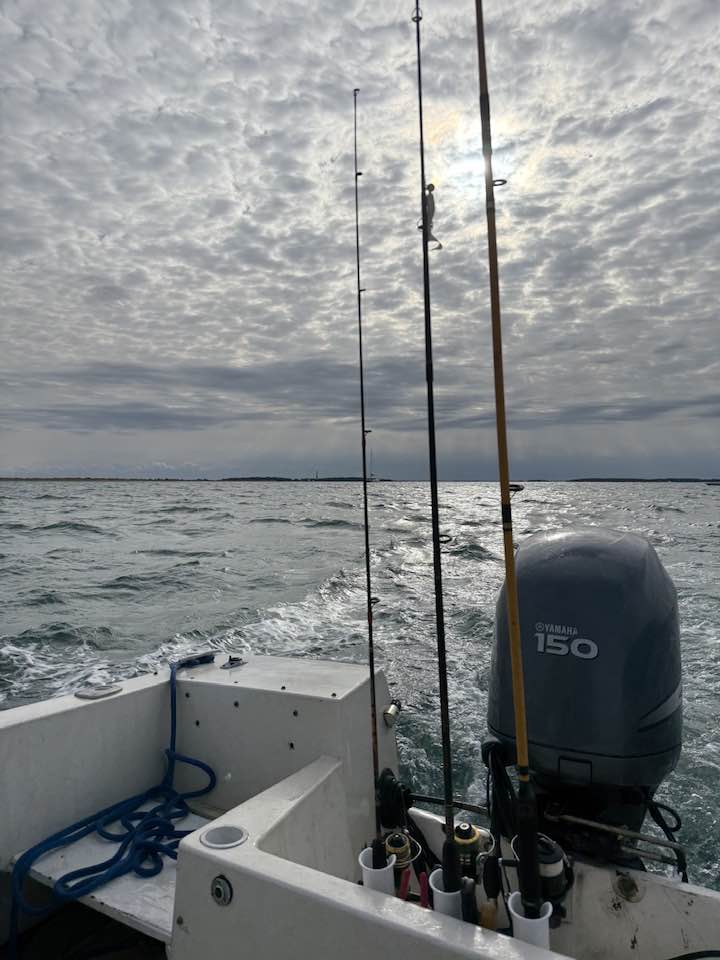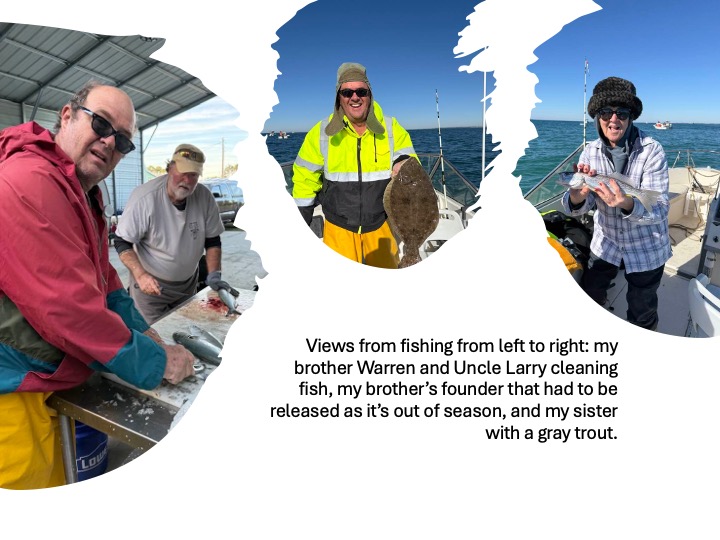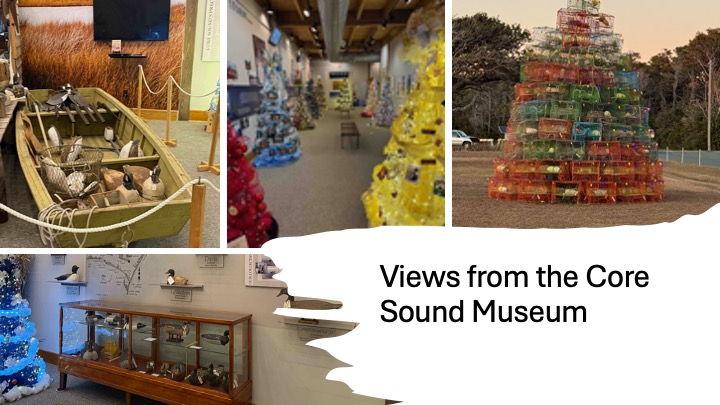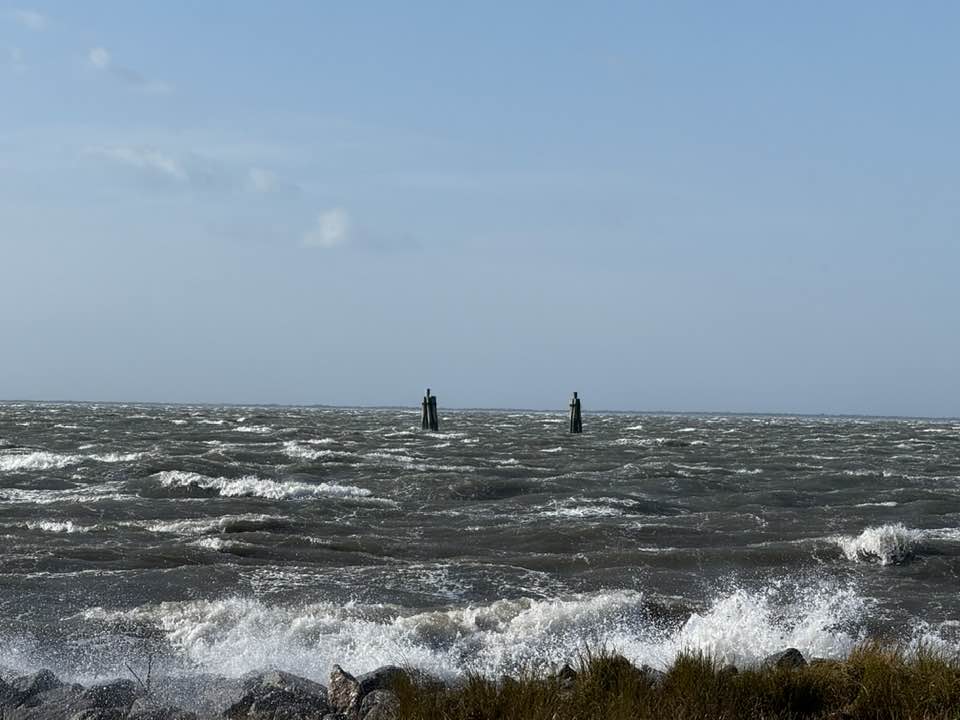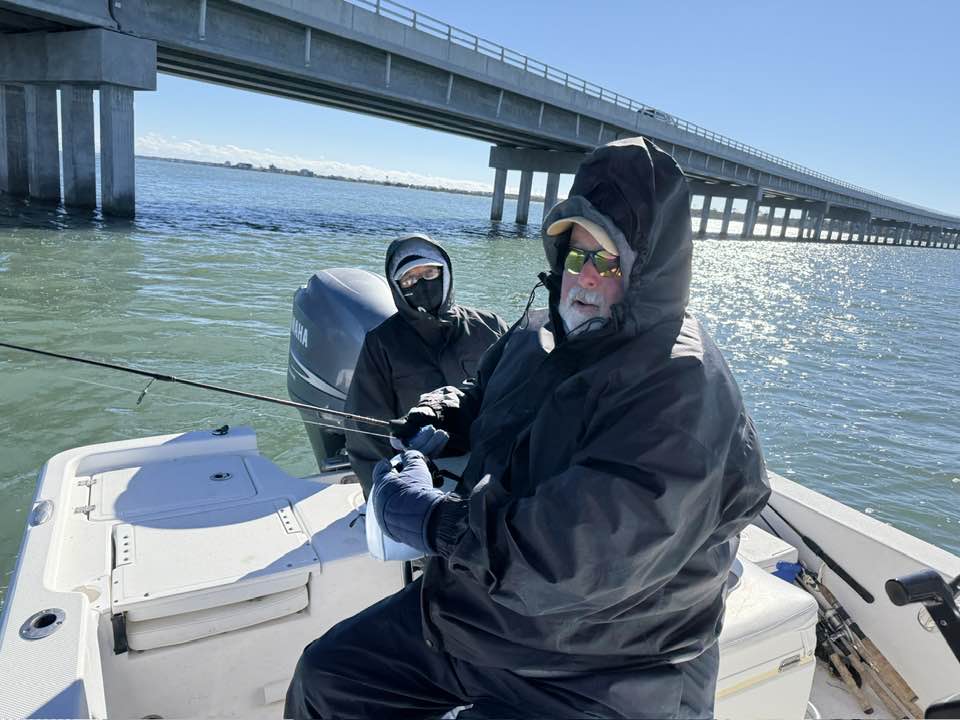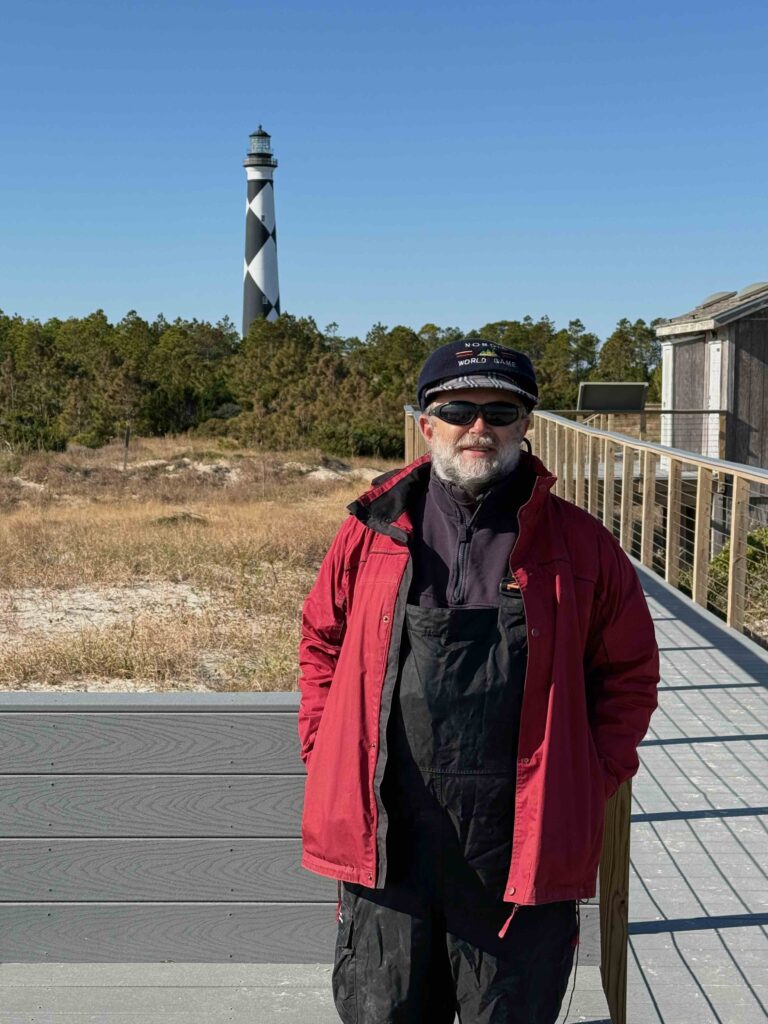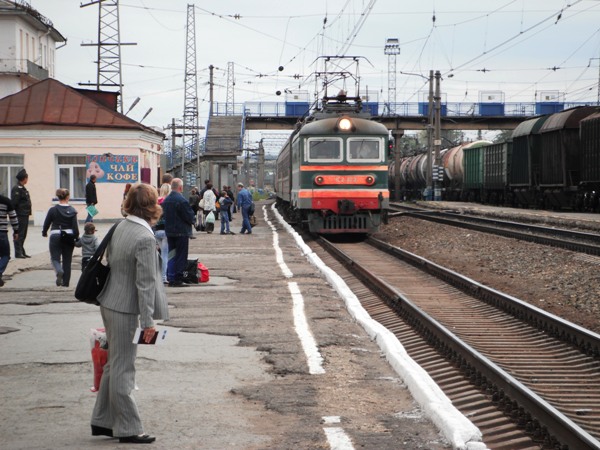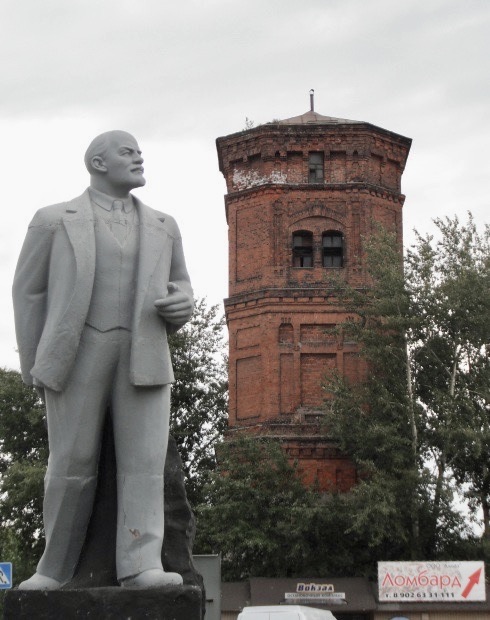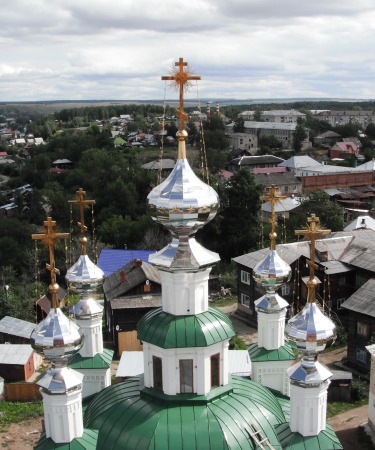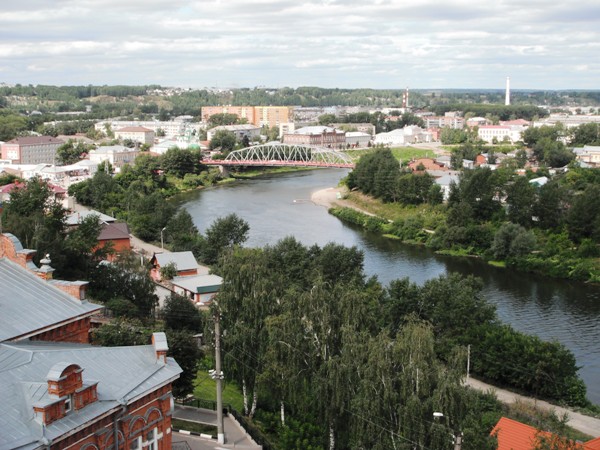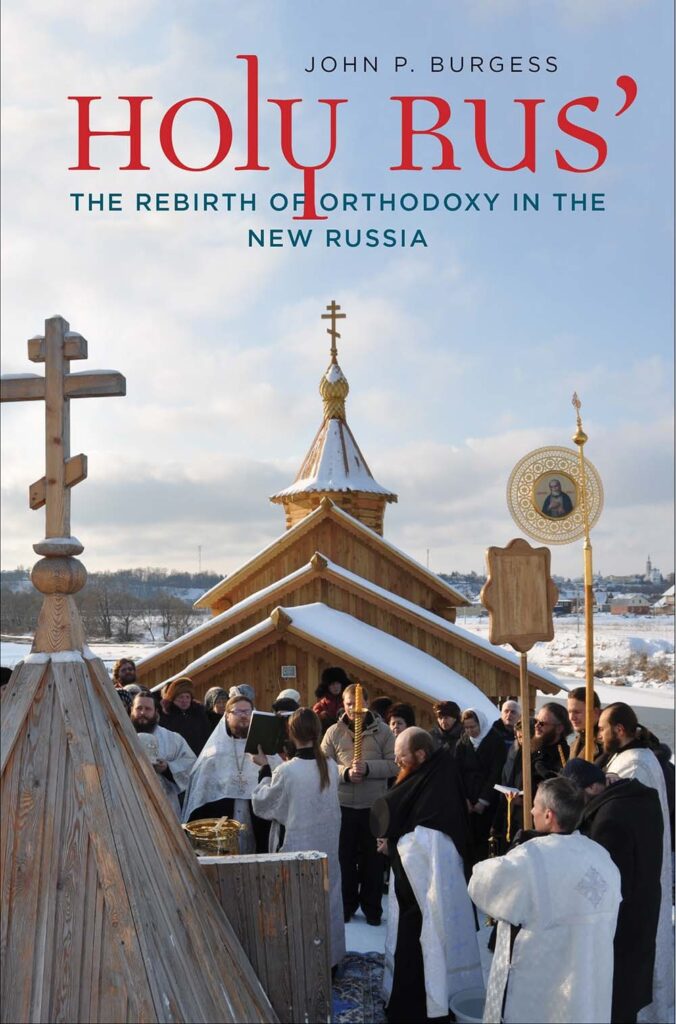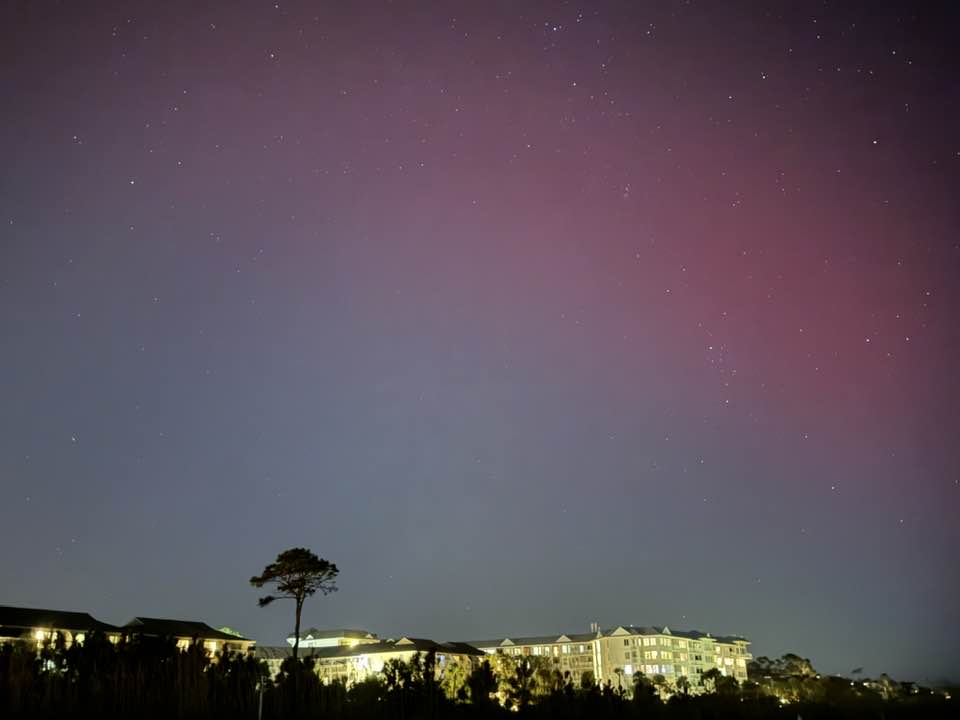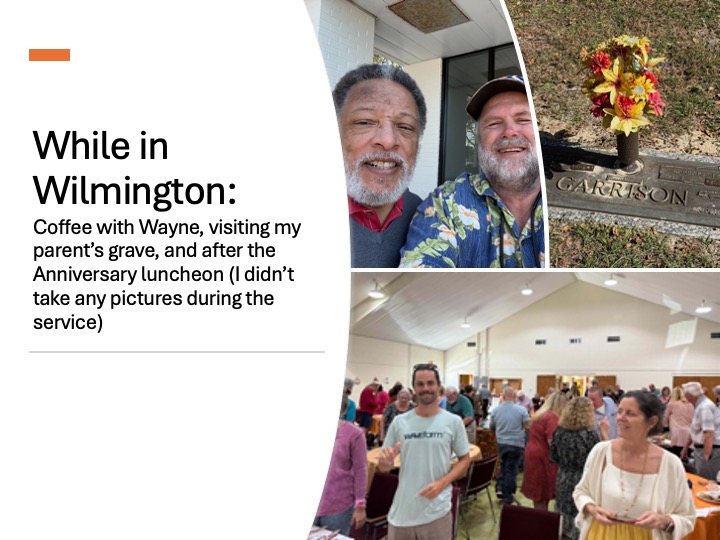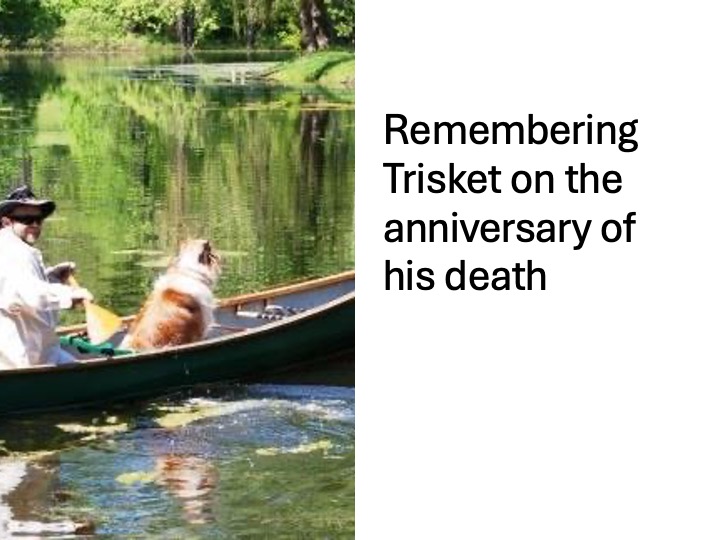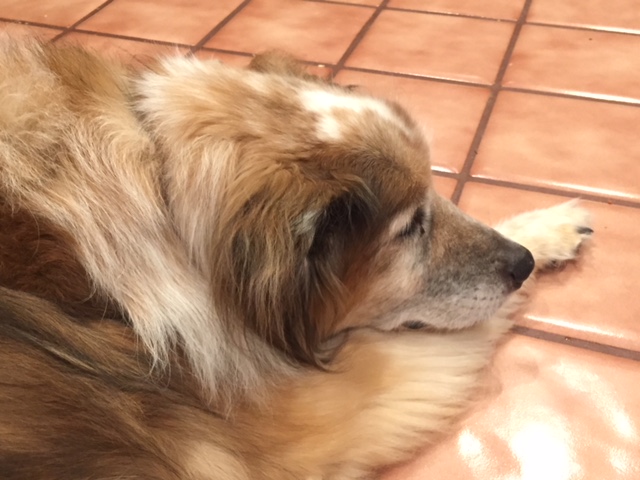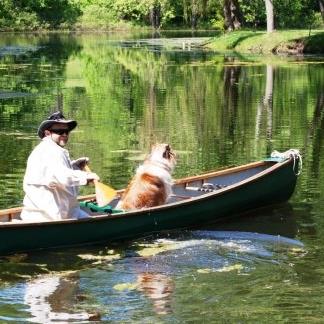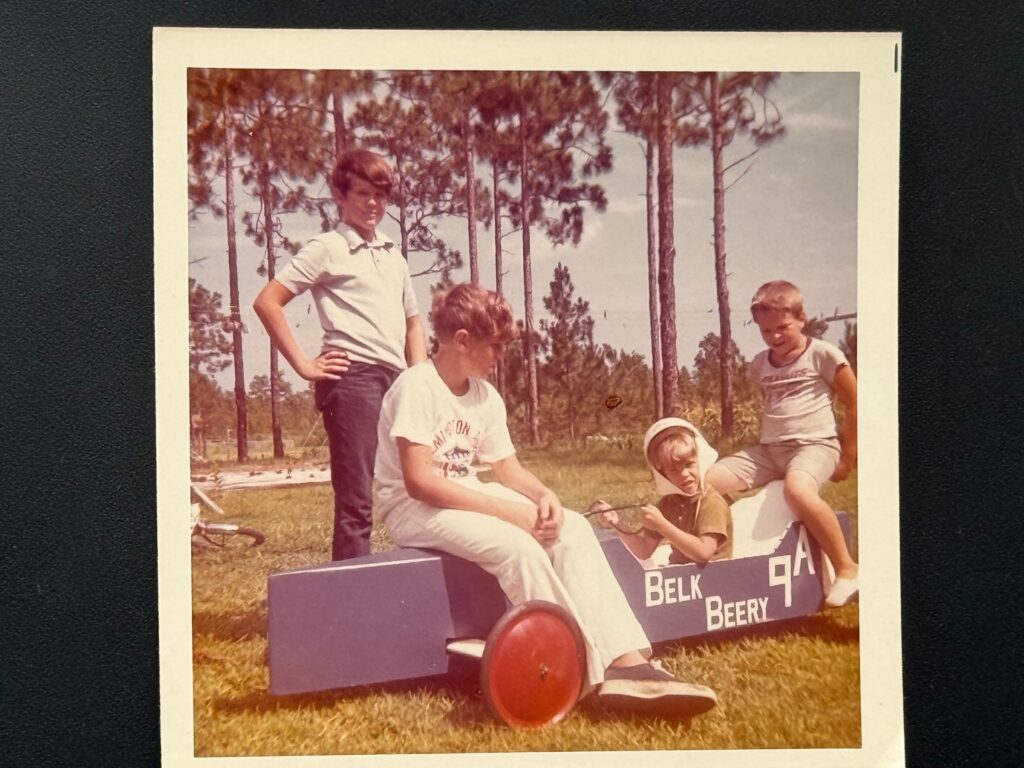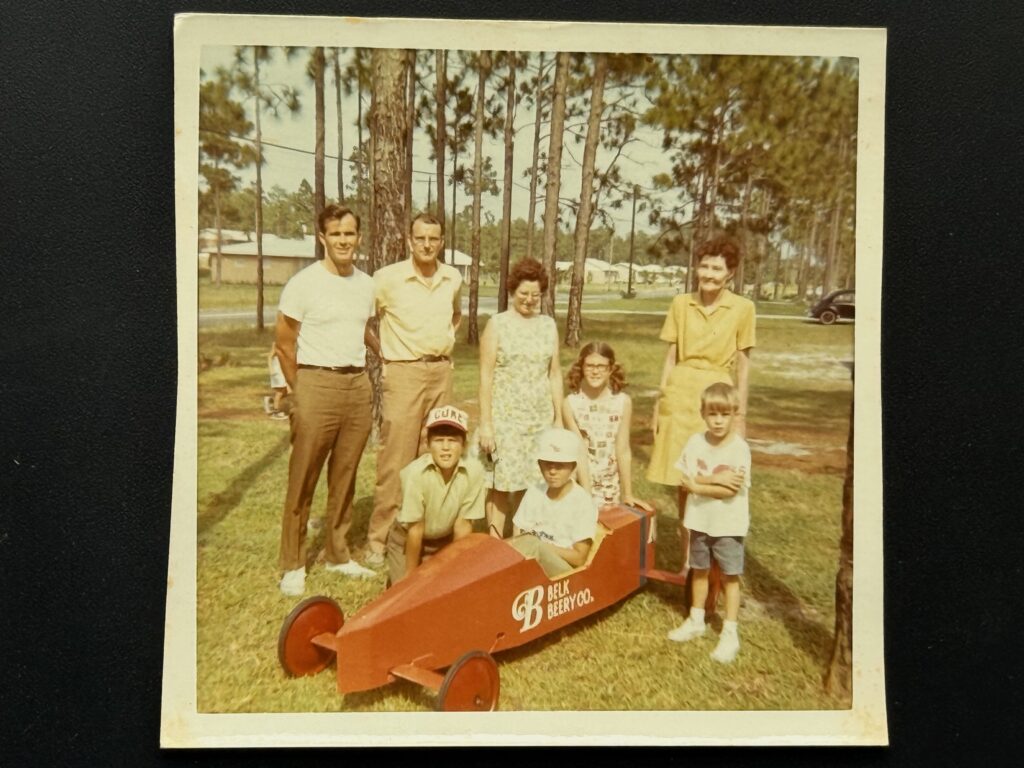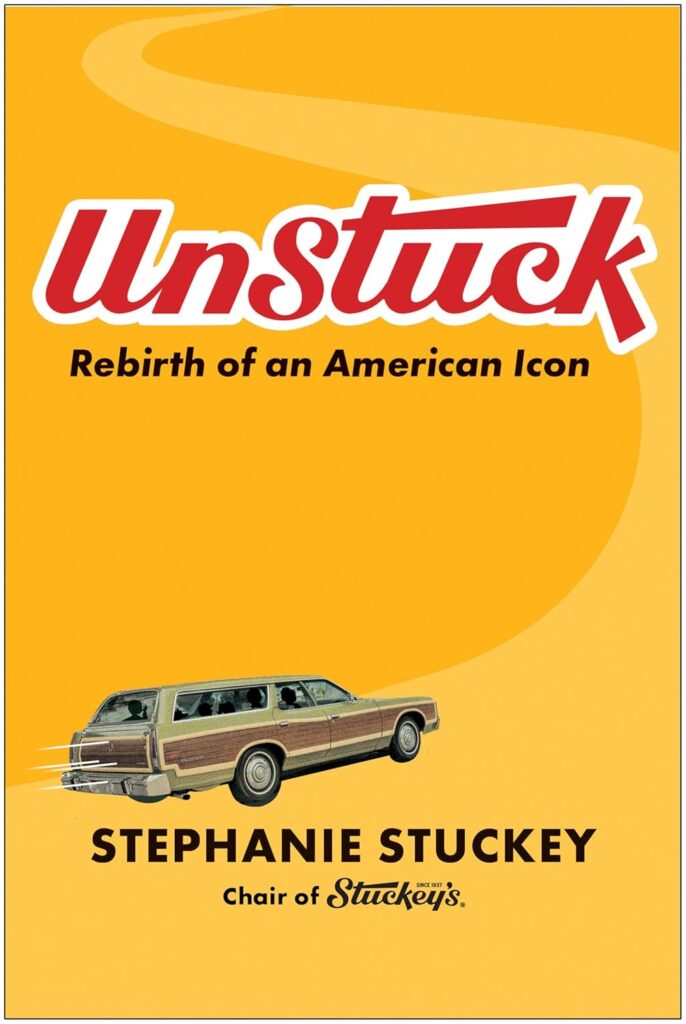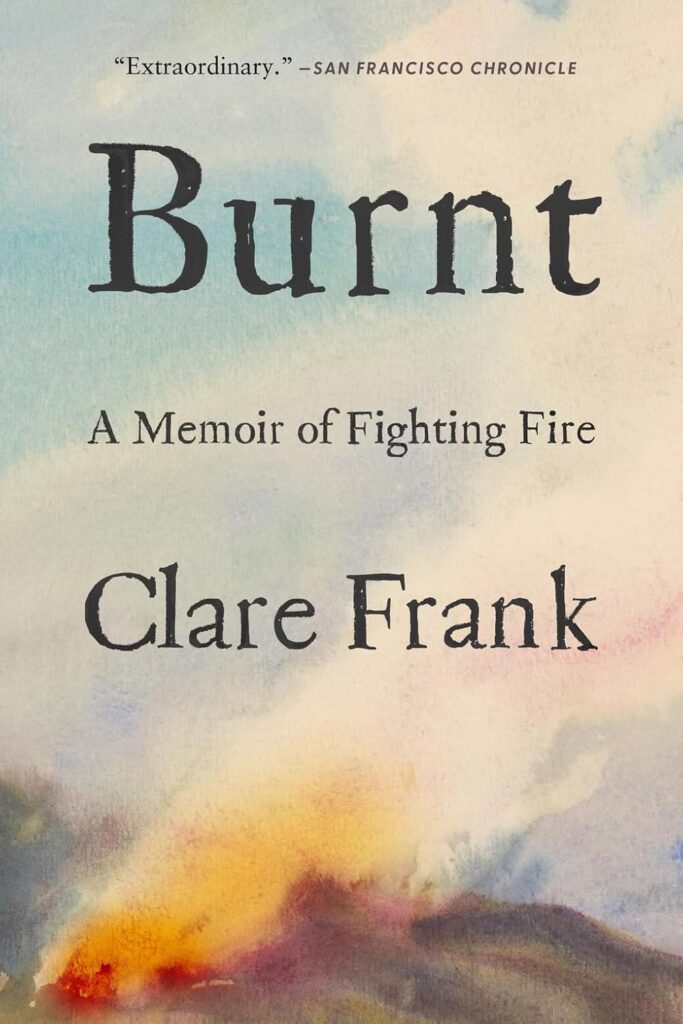The article below was published in The Skinnie, a magazine for Skidaway Island, Georgia, for the November 17, 2017 (vol. 15, issue 23). The title the editor gave the article was “Plains Speaking.” With Jimmy Carter’s death on Sunday, I thought it time to pull it out and make it available again. Carter, who was appreciated more after his presidency than before will be missed. I was moved to see that even Buckingham Palace in London had lowered the Union Jack to half mast in honor of his life.
“I don’t often attend Baptist Churches but when I do, it’s under the cover of darkness,” I quip as we turn into the driveway of Maranatha Baptist Church in Plains, Georgia. Everyone is quiet. It’s a little before 6 AM, on the first of October. The stars are still out. Yet, in the driveway is a man with a warm Southern accent welcoming us. He tells us where to park, that the church building will open at 8 AM, and that if we need to use the bathroom before then, there are some porta-johns in the back. He gives us an index card numbered 17. That’s our number when it is time to line up and enter church and it means there are 16 cars here before us.
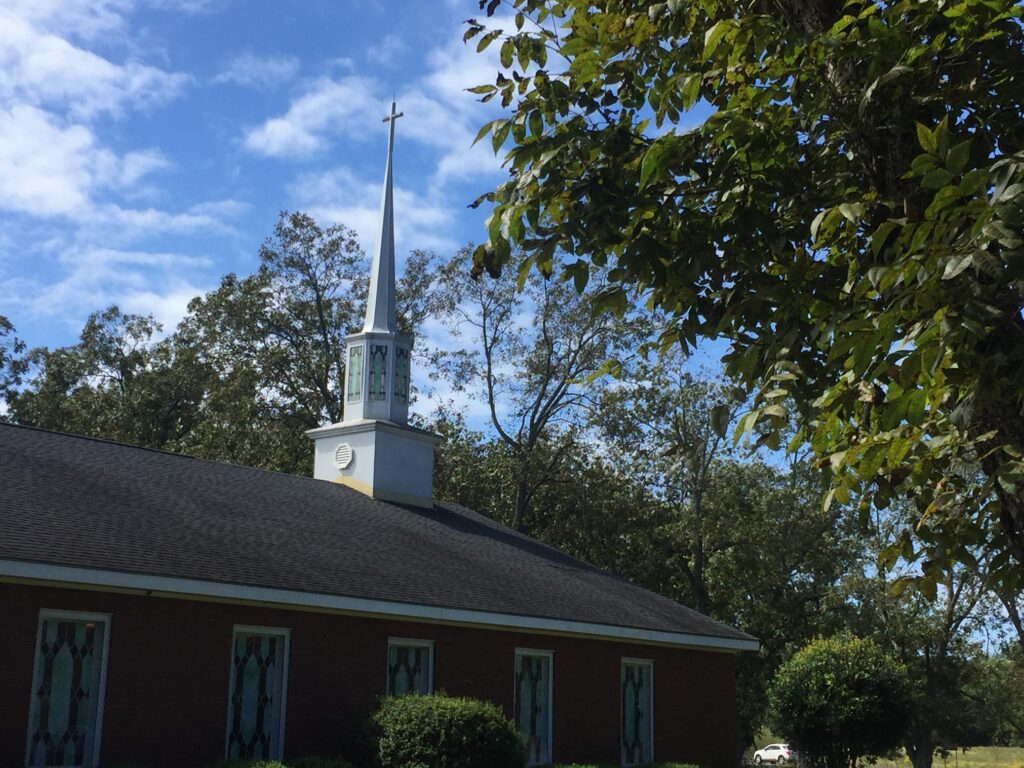
This is the earliest I’ve ever arrived at church, but Jimmy Carter’s Sunday School class starts at 10 AM and we don’t want to miss it. I park and we all fall asleep. An hour later, as dawn breaks, I wake to a Marine leading a dog sniffing all the cars in the parking lot. I’ve never had a vehicle sniffed for bombs while attending church. I doze off again.
By 7:30 AM, it is light enough to see. People are gathering in the front of the church. We join them. Cars still drive in. But the parking lot is full. Those who arrive now park in the overflow out back under a grove of pecans. A woman lines everyone up according to their number. At 8 AM, we’re ushered forward, one group at a time. They have us take everything out of our pockets while a secret service agent scans our bodies with a wand. Only then are we are allowed to enter the church. There’s more waiting.
As the sanctuary fills, a woman from the church welcomes us and informs us of the rules for a Sunday School class led by the former “Leader of the Free World.” We’re to refer to him as President Carter, not Mr. President (the latter is only appropriate for the current President). The woman reminds us the former First Lady’s name is Rosalynn, not Roselyn. We’re also reminded that while it is President Carter’s birthday, we’re not to sing happy birthday or make a big deal out of it. President Carter wants our focus to be on the lesson and not him. I had not known it was his birthday before arriving in Plains and didn’t think about bringing a card. Others had. The woman collects the cards. We’re told not to hand the Carters anything. However, she assures the Carters will receive the cards, but only after the Secret Service examines them. We’re told the Carters will be happy to allow us to have a photograph taken with them and are informed this will be conducted after the 11 AM worship service. If you skip worship, there will be no photographs.
A few minutes before 10 AM, a number of Secret Service agents enter the room and take up their positions. Then Rosalynn Carter enters with a group of friends and family members. I recognize Maureen Dowd, a columnist for The New York Times. They are all seated in a reserved section of pews. The room is nearly full.

A moment later Jimmy Carter enters with his ever present grin. He begins by asking where we’re from. There are people here from at least twenty states. He acknowledges each state. When someone says Washington, the former nuclear submariner informs us that it’s the home to the world’s finest submarine. He pauses a second for effect, then says, “the USS Jimmy Carter.” Another is from D.C. and Carter quickly quips, “I used to live there.” Everyone laughs.
When a woman identifies herself as Puerto Rican. Carter pauses to ask if she knows how her family and friends are doing after Hurricane Maria, which had struck the island ten days earlier. She sobs, saying her family is fine, but the island is devastated. President Carter acknowledges her pain and tells us to keep them in prayer and to help out anyway we can.
There are people in the sanctuary from at least twenty states and seven foreign countries: China, Korea, Germany, Peru, Canada, Russia and Cuba.
Next, President Carter asks a woman missionary to open us in prayer. After a few remarks about the state of the world, especially the danger posed by North Korea, Jimmy moves into his morning lesson. He first notes he’d been teaching on giving for the last four weeks. It troubled him that the collections were down. We all chuckle.
This morning, Carter begins a new series on the Apostle Paul’s letter to the Galatians and its theme of freedom.
“We are raised with the concept that you get what you earn,” Carter says, “but Christianity teaches that we are all saved, loved and forgiven in Jesus Christ. We only need to have faith.” Drawing from Jesus’ parables of the “Prodigal Son” and “Workers in the Vineyard,” he speaks of grace and notes how we’re all the same in God’s eye.
His Sunday School message avoids politics, and he never mentions the current President. But at one point, he lets his politics slip in as he emphasizes freedom in Christ, saying, “Jesus is the number one wall tear-downer.”
Carter insists that freedom doesn’t mean we can do whatever we want, but that freedom comes with responsibilities. He ends, inviting us to ask ourselves what kind of person we want to be. He suggests that if we are not satisfied with who we are, we should go to God in prayer and ask for help as we strive to be a better person.
At the end of his class, Carter says we have a real treat waiting in worship and introduces his favorite musician, pianist David Osborne. During the transition between Sunday School and worship, the former President takes a seat next to his wife in a pew that’s just across the aisle and a row up from me. Osborne sits down at the Steinway grand piano that had been brought into the sanctuary for this occasion, and plays a melody of tunes, beginning with, “Seek Ye First the Kingdom of God.” Later in the service, Osborne is joined by a Las Vegas singer, as they perform a selection of gospel hymns with “Happy Birthday” and “Georgia on My Mind” mixed in.
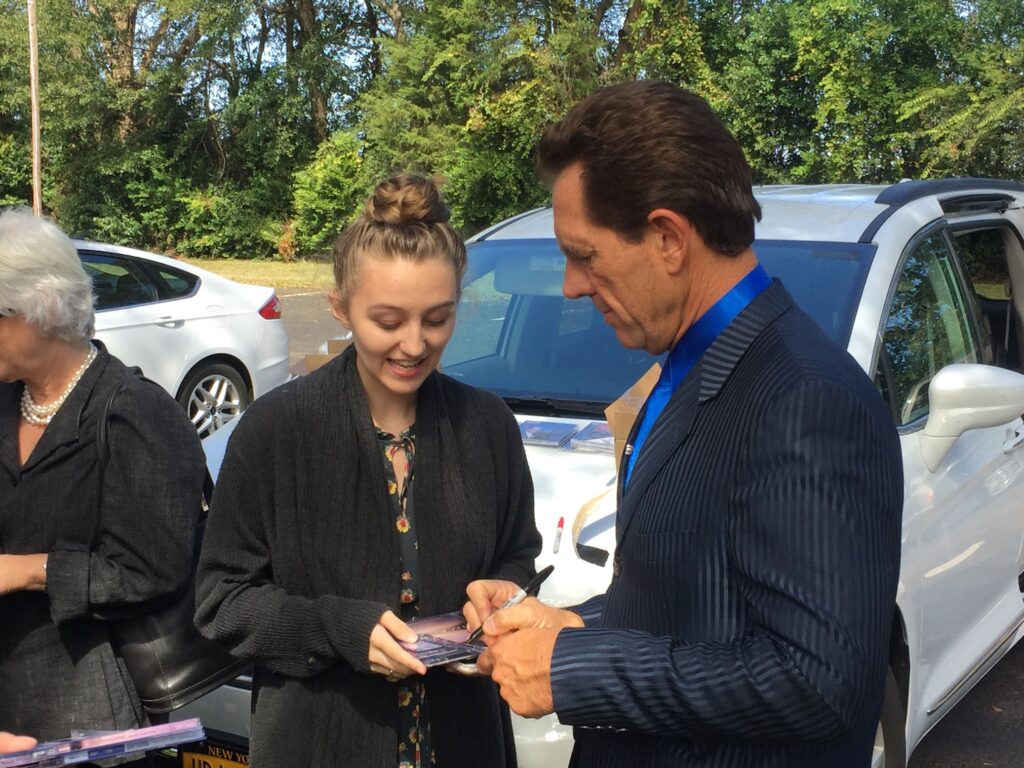
The pastor, Brandon Patterson, is a young man just finishing up seminary. His sermon is from the book of Ruth and he mentions how Ruth observed the Jewish custom and sought the protection of Boaz, her deceased husband’s kinsman, instead of running off with a younger man. To make the point, he emphasizes Boaz’s age. Rosalynn puts her elbow into her husband side. After all, it’s his 93rd birthday. Carter laughs. The preacher notices and turns red and immediately attempts to crawl out of the hole he’s dug, saying that he didn’t mean that old. Everyone erupts into laughter.
When the service is over, a very efficient line is set up and each group is allowed to have their photo taken with Jimmy and Rosalynn. Afterwards, we leave Plains and drive back to Skidaway Island.
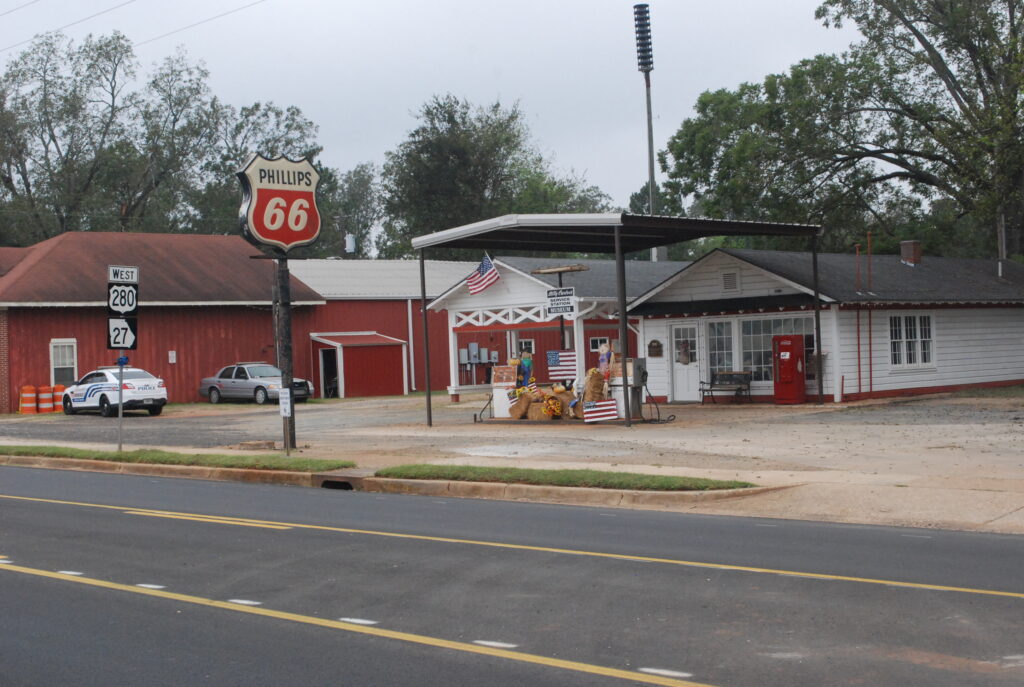
To be in place for President Carter’s Sunday School class, we had made a weekend of it. We spent our nights in Americus, Georgia as there are no major hotels in Plains. On Saturday, we explored Plains. The old school where Jimmy and Rosalynn attended high school is now a museum and visitors center. The depot, which was Carter’s campaign headquarters and served as a backdrop for many photos, is also a museum that focuses on the 1976 Presidential Campaign. It was chosen as a headquarters as it was the only available space in town with a functioning bathroom. Ironically, the bathroom is no longer open.
The park between Main Street and the railroad tracks is a butterfly garden named for Rosalynn. Across the tracks and highway is the gas station, which was owned by Carter’s brother, Billy. This station became a favorite hangout of reporters who listened to Billy tell stories while guzzling beer. Today, it’s a museum dedicated to Billy Carter. There are two peanut processing plants in town and on this first weekend of October, the smell of peanuts is in the air as tractors pulled wagons of nuts into these facilities. There are also a few shops in town, mostly selling Carter memorabilia, and the Buffalo Café, which is where we enjoyed lunch.
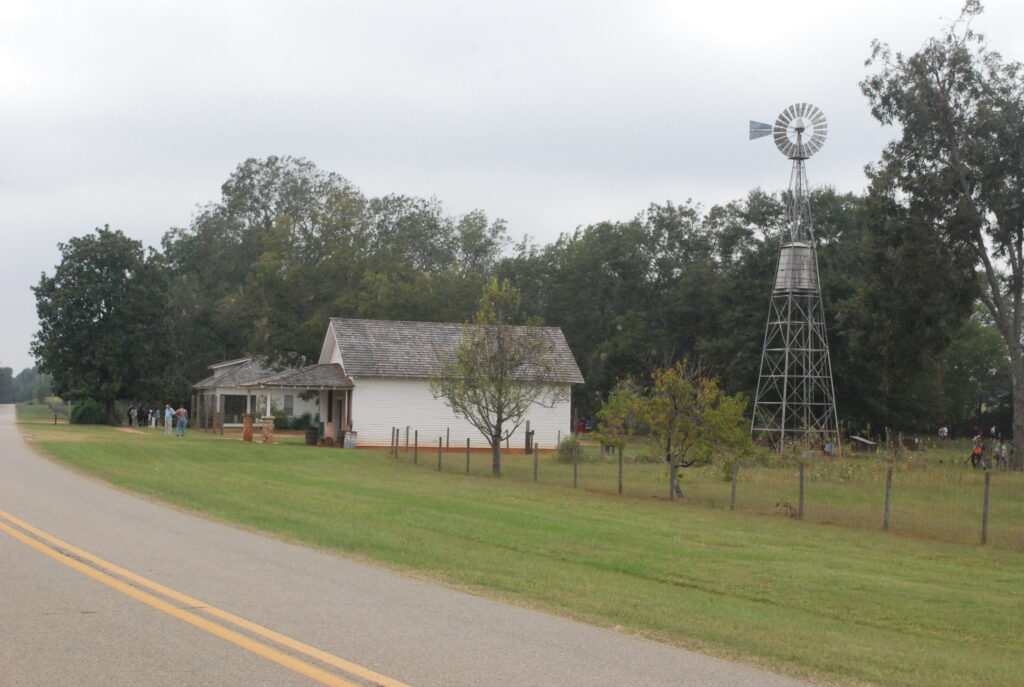
After lunch, we drove a few miles west of Plains to the Carter’s homestead. This was where Jimmy grew up. Seventeen acres, which includes their home, farm buildings and barns, and a country store, are preserved by the National Park Service. Park service employees, some dressed as farm hands, described life on the farm in the 1930s.

After touring the homestead, we drove back through Americus, to Andersonville, the site of the Confederate Prisoner of War camp along with the National POW Museum. Today, Andersonville is mostly a large field circled by a drive. Only the bunkers in which Confederate cannons where placed remain from the Civil War era. The gateway and part of the wall around the entry into which Union POWs were marched have been rebuilt, but around the drive are a number of signs and monuments describing the horrific conditions of the prisoners. In the National POW Museum, the stories of those captured are told, with major exhibits on POWs in World War Two, Korea and Vietnam. The exhibits reminds us of the price many paid for our political freedom.
Plains is roughly 230 miles west of Skidaway Island, depending on which route one drives. Before making the trip, one should check with the Maranatha Baptist Church to make sure that President Carter is planning on being there. This December, President Carter is scheduled to teach Sunday School on the 10th, 17th and 24th.
Jeff Garrison is pastor of Skidaway Island Presbyterian Church


